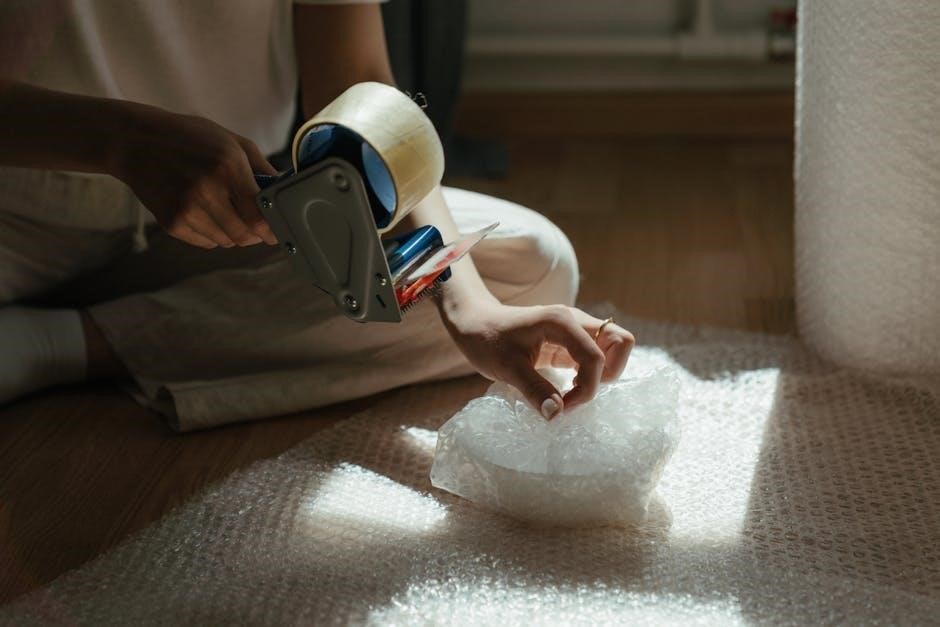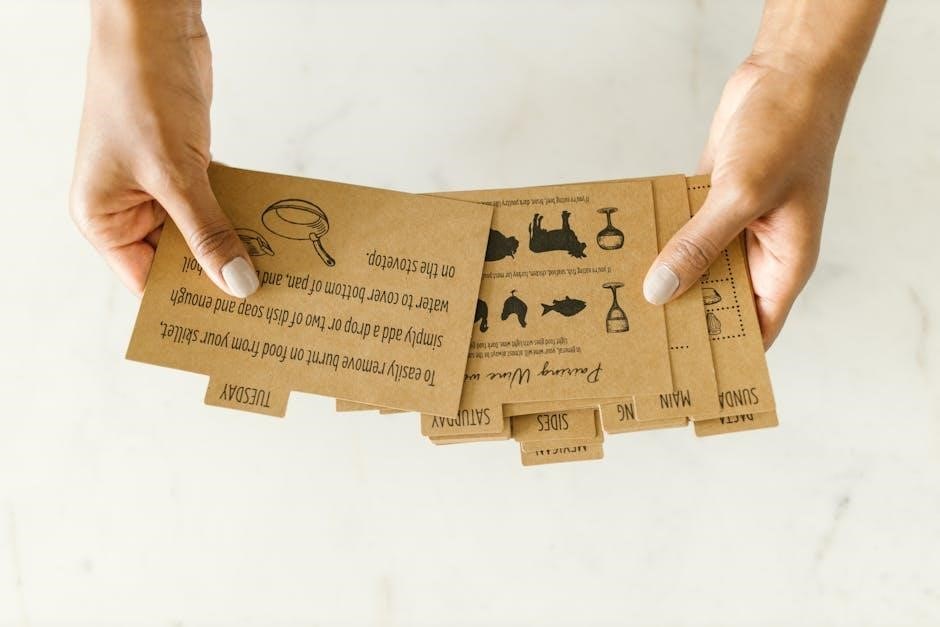Heatwaves pose significant health risks, especially for vulnerable populations. Understanding safety measures is crucial to prevent heat-related illnesses and ensure well-being during extreme temperatures.
Understanding Heatwaves and Their Impact
A heatwave is a prolonged period of abnormally high temperatures, often exceeding average highs by 5-10 degrees. It can lead to heat exhaustion, dehydration, and heat stroke, especially for vulnerable groups like children, the elderly, and those with pre-existing conditions. Understanding heatwaves is crucial for recognizing their health risks and taking preventive measures to protect yourself and others during extreme heat events.
Why Heatwave Safety is Crucial
Heatwave safety is essential to prevent heat-related illnesses, which can rapidly escalate from discomfort to life-threatening conditions. Vulnerable populations, such as children, the elderly, and those with health issues, are at higher risk. Heatwaves can cause dehydration, heat exhaustion, and heat stroke, which may lead to long-term health consequences or even death. Prioritizing safety measures ensures the well-being of individuals and communities during extreme heat events.

Staying Hydrated During a Heatwave
Staying hydrated is vital during heatwaves. Drink water regularly before feeling thirsty, avoid alcohol and caffeine, and monitor urine color to ensure proper hydration levels.
Drinking Water Regularly
Drinking water regularly is essential during a heatwave to maintain bodily functions and prevent dehydration. Aim to drink water every 15-20 minutes, even if you don’t feel thirsty, especially for children, pregnant women, and older adults. Monitor your activity level and environment to adjust your hydration needs. Avoid dark yellow urine, as it indicates dehydration. Staying hydrated helps your body regulate temperature and function properly during extreme heat.
Avoiding Alcohol and Caffeine
Alcohol and caffeine can worsen dehydration by acting as diuretics, increasing fluid loss. During a heatwave, it’s crucial to avoid these beverages to maintain proper hydration levels. Both can impair your body’s ability to regulate temperature, leading to heat-related illnesses. Instead, opt for water or electrolyte-rich drinks to stay hydrated and support bodily functions during extreme heat conditions.
Monitoring Urine Color for Hydration Levels
Monitor your urine color to assess hydration levels during a heatwave. Dark yellow or amber-colored urine indicates dehydration, while pale yellow or clear urine suggests proper hydration. If your urine is dark, increase water intake immediately. Additionally, pay attention to other signs of dehydration, such as dizziness, fatigue, or dry mouth. Adjust your fluid consumption accordingly to maintain optimal hydration and prevent heat-related illnesses.

Clothing Tips for Extreme Heat
Wear lightweight, light-colored, loose-fitting clothes to stay cool. Avoid heavy or dark clothing that traps heat, and opt for breathable fabrics like cotton to promote airflow.
Wearing Lightweight, Light-Colored, Loose-Fitting Clothes
Choose breathable fabrics like cotton to stay cool. Light colors reflect sunlight, while loose fits improve airflow. Avoid tight or heavy clothing that traps heat.
Avoiding Overdressing
Avoid wearing heavy or tight clothing that traps heat and moisture. Overdressing can lead to dehydration and discomfort; Opt for lightweight, breathable fabrics like cotton, which allow air to circulate and help regulate body temperature. Light-colored clothes reflect sunlight, while loose-fitting designs prevent heat buildup. Dressing appropriately ensures better comfort and reduces the risk of heat-related illnesses during extreme temperatures.
Heatwave Safety Tips
Stay informed about weather alerts, schedule outdoor activities during cooler parts of the day, and check on vulnerable individuals to ensure everyone remains safe and healthy.
Staying Indoors During the Hottest Part of the Day
Stay indoors, especially between 11am and 3pm when the sun is strongest. Keep windows closed, use shades, and rely on fans or air conditioning to stay cool. Avoid strenuous activities and rest in shaded or air-conditioned areas. Drink water regularly and apply cool, damp cloths to your skin if needed. This helps reduce exposure to direct sunlight and lowers the risk of heat-related illnesses.
Limiting Outdoor Activities
Restrict outdoor activities during extreme heat, especially between 11am and 3pm. If you must go outside, stay in shaded areas and wear lightweight, light-colored clothing. Avoid strenuous tasks like yard work and plan activities for early mornings or evenings when temperatures are cooler. This reduces the risk of heat exhaustion and helps maintain hydration levels effectively.

Safety for Vulnerable Populations
Protecting children, older adults, and pregnant women is crucial during heatwaves. Ensure they stay hydrated, cool, and monitored to prevent heat-related illnesses and complications.
Protecting Children from Heat
Dress children in lightweight, light-colored clothing and ensure they stay hydrated. Keep them in shaded or air-conditioned areas, especially during peak heat. Avoid leaving them in closed vehicles, as temperatures rise rapidly. Monitor their outdoor playtime and apply sunscreen. Encourage frequent water breaks and consider cooling measures like damp cloths or cool baths. Check on them regularly to prevent heat exhaustion and ensure their safety during extreme temperatures.
Keeping Pets Safe
Keep pets hydrated with fresh water and provide shaded areas to escape the sun. Avoid walking them during peak heat to prevent paw burns. Never leave pets in closed vehicles, as temperatures rise rapidly. Monitor for signs of heat stress, such as panting or lethargy. Use cooling pads or wet towels to help lower their body temperature. Limit outdoor activities to early mornings or evenings to ensure their safety and comfort during extreme heat.
Caring for Older Adults
Older adults often struggle to regulate body temperature, making them highly vulnerable during heatwaves. Check on them at least twice daily, encouraging regular hydration. Ensure their home stays cool, ideally between 68°F and 74°F. Apply cool, damp cloths to their forehead or neck to lower body heat. Remind them to avoid peak sun hours and wear lightweight clothing. Their safety during extreme heat requires consistent monitoring and support to prevent heat-related illnesses.
Special Considerations for Pregnant Women
Pregnant women face increased heatwave risks as their bodies work harder to stay cool. Stay indoors during peak heat, rest in cool rooms, and use fans. Drink at least 10 cups of water daily and consume electrolyte-rich beverages to prevent dehydration. Each 1°C rise in maternal temperature can heighten risks. Consult your healthcare provider for personalized advice to ensure both mother and baby remain safe during extreme heat.

Outdoor Safety During a Heatwave
Stay in the shade during peak sun hours, wear lightweight clothing, and limit outdoor activities to early mornings or evenings to avoid heat exposure.
Never Leaving Children or Pets in a Closed Vehicle
Never leave children or pets unattended in a closed vehicle, as temperatures can rise dangerously fast, leading to heat stroke or even death. Always check the back seat before locking the car and use shades to block direct sunlight. If you see a child or pet trapped, act immediately to ensure their safety and call for help if necessary.
Scheduling Outdoor Activities for Cooler Parts of the Day
Schedule outdoor activities during early mornings or late evenings when temperatures are lower. Avoid the hottest part of the day, typically between 11am and 3pm, to reduce heat exposure. Wear lightweight, light-colored clothing and stay hydrated. This helps prevent heat-related illnesses and ensures safer outdoor experiences during a heatwave.

Recognizing Heat-Related Illnesses
Heat exhaustion and heat stroke are common heat-related illnesses. Symptoms include dizziness, nausea, and heavy sweating for heat exhaustion, while heat stroke involves seizures and high body temperature.
Understanding Heat Exhaustion
Heat exhaustion is a heat-related illness caused by prolonged exposure to high temperatures, leading to dehydration and overheating. Symptoms include dizziness, nausea, heavy sweating, pale skin, and a weak pulse. If untreated, it can progress to heat stroke, a life-threatening condition. Recognizing these signs early is crucial for prompt intervention, such as moving to a cooler environment, resting, and hydrating to prevent further complications and ensure recovery.
Identifying Heat Stroke Symptoms
Heat stroke is the most severe form of heat-related illness, requiring immediate attention. Symptoms include a high body temperature (above 103°F), seizures, confusion, loss of consciousness, and hot, dry skin with no sweating. It occurs when the body’s cooling mechanisms fail, posing a life-threatening risk. If symptoms arise, move the person to a cool place, apply cool cloths or ice packs, and seek emergency medical help. Delaying treatment can lead to serious complications or death.
First Aid for Heat-Related Illnesses
Move the person to a cool place, apply cool cloths or ice packs, and encourage hydration. Seek medical help if symptoms persist.
Immediate Steps for Heat Exhaustion
Move the person to a cool, shaded area or air-conditioned space. Remove excess clothing and apply cool, wet cloths or ice packs to the forehead, neck, and arms. Offer water to drink slowly. If conscious, encourage sipping every 15 minutes. Loosen tight clothing and fan the person to improve airflow. Monitor body temperature and vital signs. If symptoms worsen or last longer than 30 minutes, seek immediate medical attention. Rest and hydration are key to recovery.
Emergency Response for Heat Stroke
Heat stroke is a medical emergency requiring immediate action. Move the person to a cool, shaded area or air-conditioned space. Apply ice packs or cool cloths to the body, focusing on the head, neck, and armpits. Remove excess clothing and fan the person to lower body temperature. Do not give anything by mouth. Call 911 or seek emergency medical help if the person loses consciousness, experiences seizures, or shows signs of severe distress. Prompt treatment is critical to prevent complications.

Preparing Your Home for a Heatwave
Prepare your home by using fans, sealing windows, and keeping shades closed during the day to maintain a cool indoor environment and using cooling devices at night.
Using Fans and Air Conditioners Effectively
Use fans to circulate air, making rooms feel cooler without overloading ACs. Run air conditioners during the hottest parts of the day to maintain a safe indoor temperature. Close windows and blinds during daylight to keep heat out, then open them at night to cool your home naturally. Ensure AC filters are clean for optimal performance and energy efficiency. This combination helps maintain a comfortable environment during extreme heat.
Sealing Windows and Using Shades
Keep windows closed during the day to prevent heat from entering and use shades or blinds to block direct sunlight. Open windows at night to let in cooler air, then close them before sunrise. Install thermal curtains or blackout blinds to reduce heat gain. Weatherstrip gaps around windows to seal in cool air and keep hot air out. These steps help maintain a cooler indoor environment and reduce the need for air conditioning.

Community and Neighborly Support
Check on neighbors, especially the elderly and those with health conditions. Share water, fans, and shade. Collaborate to stay safe and informed together.
Checking on Vulnerable Neighbors
Regularly check on elderly, disabled, or isolated neighbors during heatwaves. Ensure they have access to water, shade, and cool spaces. Offer to help with errands or yard work. Monitor their indoor temperature and encourage them to stay hydrated. For families with young children, provide hydration tips and shaded areas. Check on pets as well, ensuring they have water and shelter. Community support is vital for collective safety.
Sharing Resources During a Heatwave
Sharing resources during a heatwave strengthens community bonds and ensures everyone’s safety. Offer water, fans, or air-conditioned spaces to those in need. Organize community cooling centers or donation drives for vulnerable populations. Educate neighbors on heat safety and hydration tips. Small acts of kindness, like sharing shade or transportation, can make a significant difference. Together, we can create a safer, more supportive environment during extreme heat.

Staying Informed
Monitor weather alerts and health guidelines to stay updated on heatwave conditions. Knowledge is key to protecting yourself and others during extreme heat events.
Monitoring Weather Alerts
Stay informed about weather conditions by checking local forecasts and heatwave alerts regularly. Sign up for emergency alerts from weather services or apps to receive real-time updates. Pay attention to heat index values, as they indicate how the temperature feels to the human body. Adjust your plans according to weather advisories, especially for outdoor activities. This proactive approach helps prevent heat-related risks and ensures you’re prepared for extreme heat events.
Following Health Guidelines
Adhere to health recommendations to stay safe during a heatwave. Drink water regularly, limit strenuous activities, and stay indoors during peak heat. Wear lightweight, light-colored clothing and use sunscreen. Avoid alcohol and caffeine, which can dehydrate you. Check on vulnerable neighbors, especially the elderly and young children. Follow local health guidelines and seek medical advice if heat-related symptoms arise. Prioritizing these steps helps protect you and your family from heat-related illnesses.
Gardening and Outdoor Activities
Water plants efficiently, avoiding evaporation by watering in the early morning or evening. Avoid strenuous yard work during peak heat to prevent dehydration and heat exhaustion.
Watering Plants Effectively
Water plants deeply in the early morning or evening to minimize evaporation. Use mulch to retain soil moisture and regulate temperature. Avoid overwatering, which can harm roots. Check soil moisture before watering, and prioritize drought-resistant plants. Watering deeply but infrequently encourages deep root growth, making plants more heat-resilient. Ensure pots and containers have drainage holes to prevent waterlogging. By watering efficiently, you conserve resources while keeping your garden healthy during extreme heat;
Avoiding Strenuous Yard Work
Limit yard work to early mornings or late evenings when temperatures are cooler. Avoid strenuous activities during peak heat (11 AM–3 PM); If working outdoors, take frequent breaks in shaded areas. Stay hydrated by drinking water regularly, and wear lightweight, loose-fitting clothing. Plan tasks according to weather forecasts to avoid overexertion. Prioritize lighter chores and postpone heavy labor until temperatures drop. This helps reduce heat strain and prevents heat-related illnesses.

Pet Care During a Heatwave
Ensure pets have access to shade, water, and cooler spaces. Avoid walks during peak heat, and monitor for signs of heat stress. Keep them safe indoors when temperatures soar.
Providing Adequate Water and Shade
Ensure pets always have access to fresh water in shaded areas to prevent dehydration. Place water bowls in multiple locations, including shaded spots, to encourage frequent drinking. Provide cool, shaded spaces for rest, such as under trees or canopies, to protect pets from direct sunlight. Consider using wet towels or cooling pads to help lower their body temperature. Keep water sources clean and easily accessible at all times.
Avoiding Walks During Peak Heat
Avoid walking pets during the hottest parts of the day, typically between 11 AM and 3 PM, when surfaces like pavement can become scorching hot; This prevents burned paws and discomfort. Schedule walks for early mornings or evenings when temperatures are cooler. Always test the pavement with your hand to ensure it’s safe. Keep pets indoors during peak heat to reduce the risk of heat stress and dehydration, ensuring their comfort and safety.

